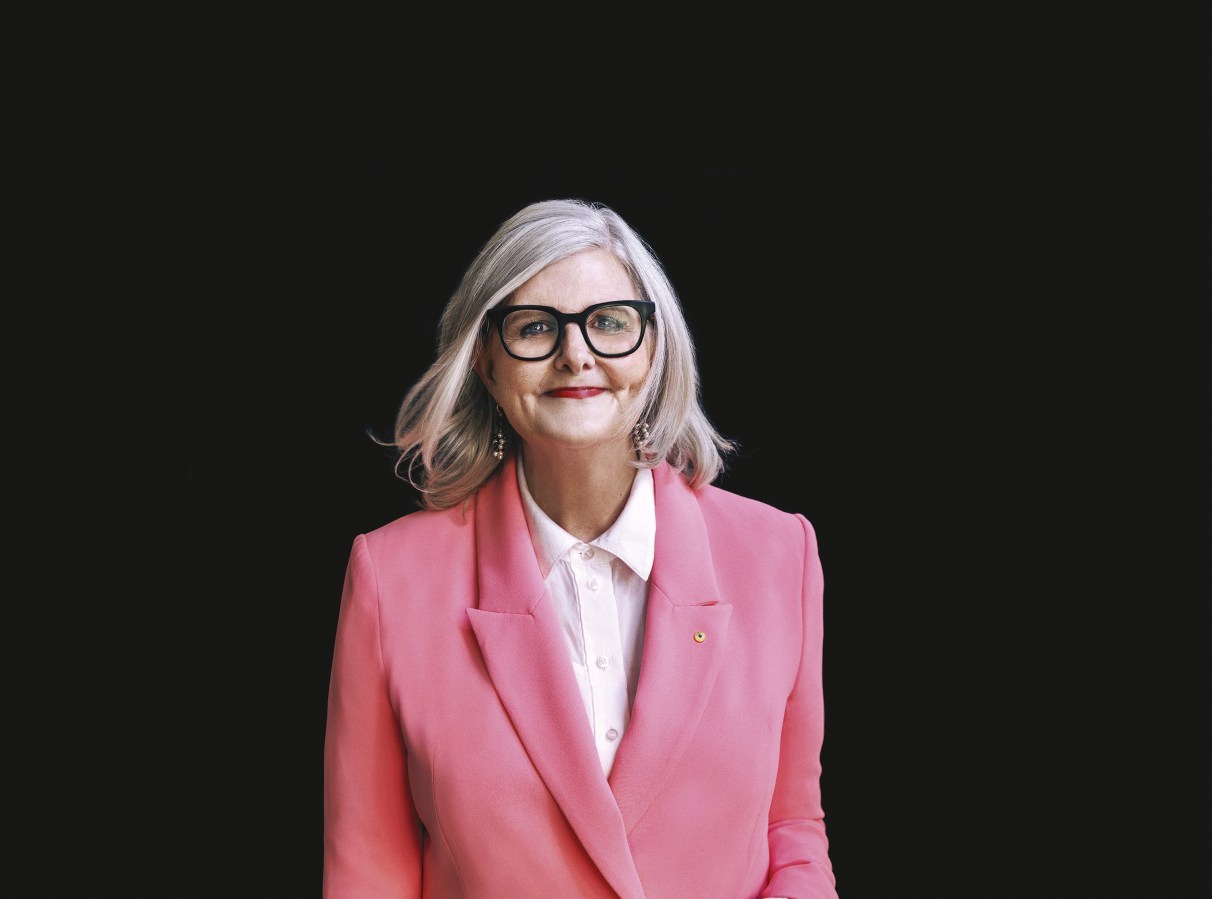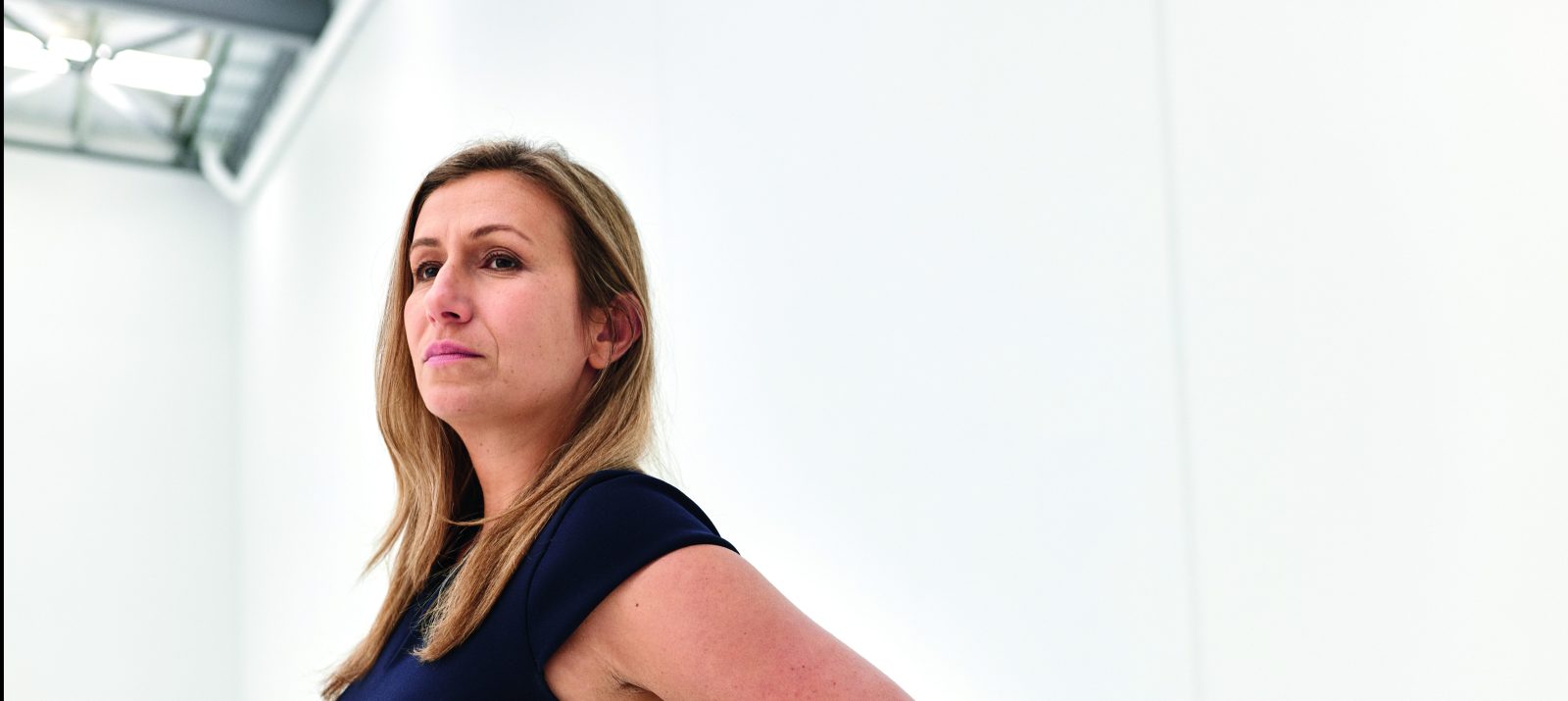Fresh off a $50 million capital raise that doubled its valuation to $350 million, satellite start-up Fleet Space is at the forefront of Australia’s rapidly growing space industry. Its co-founder, Flavia Tata Nardini, reveals how her company became the fastest-growing start-up in Australia and its – literal – moonshot plans.
This article is featured in Issue 11 of Forbes Australia. Tap here to secure your copy.
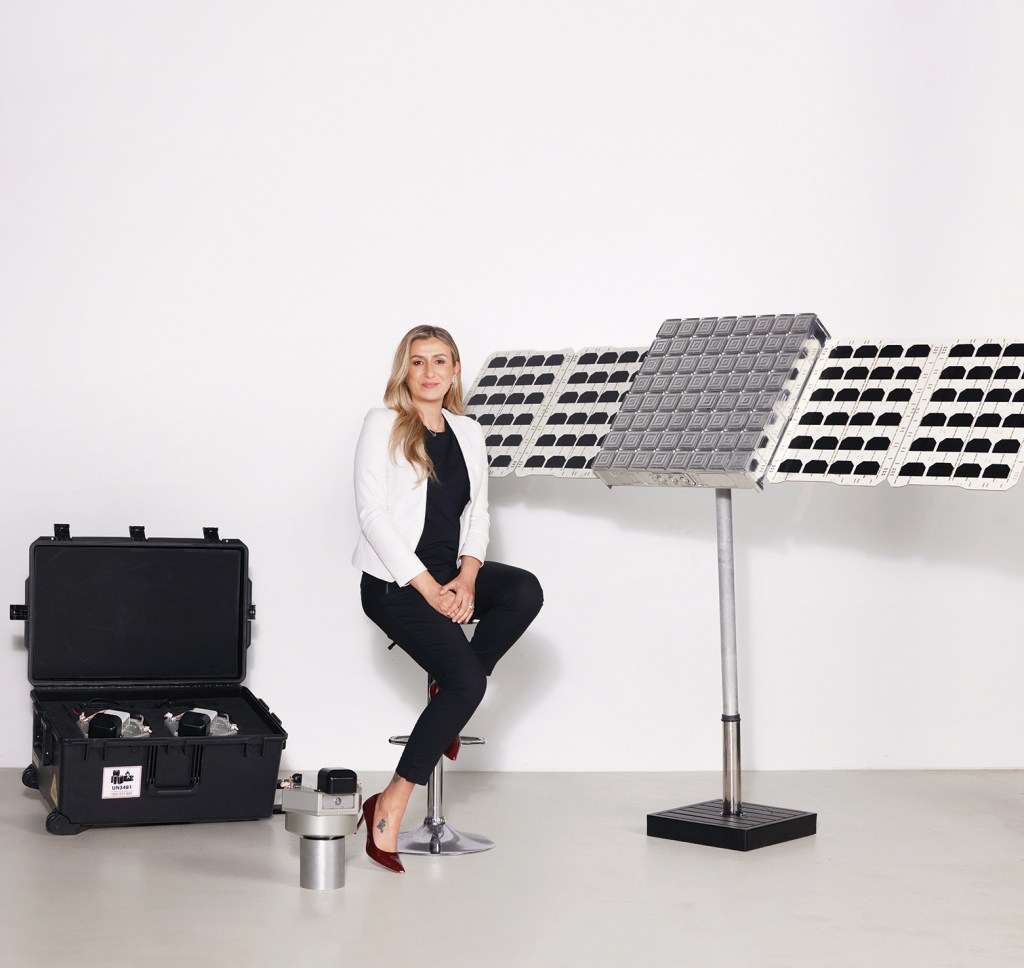
How does an Italian rocket scientist become an Australian household name? By co-founding a $350 million space exploration start-up out of Adelaide, shooting satellites off Elon Musk’s SpaceX rockets and, in many ways, pioneering Australia’s rapidly growing space industry.
The rocket scientist in question, Flavia Tata Nardini, is at the helm of Fleet Space Technologies, which hit a few milestones at the end of last year. One, it raised $50 million via its Series C and doubled its valuation (to $350 million). And two, as company figures revealed revenue had grown at a compound annual growth rate of 582% over the last three years, it was crowned Australia’s fastest-growing start-up.
“We have found an incredible market fit for the high-value application of something which the world really needs right now,” Nardini says. “It’s the right point with the right product.”
The company’s exponential growth sits mainly in line with the broader growth of the space economy. Globally, it was valued at about US$447 billion in 2023, up from US$280 billion in 2010, and McKinsey estimates it could balloon to US$1 trillion by 2030.
Looking at Australia, the local space sector generated $5.7 billion in 2020 and supported more than 15,000 jobs. However, the goal of the Australian Space Agency, established in 2018, is to build that to about $10 to $12 billion per year by 2030 and make it a key to the growth and diversification of the Australian economy.
At the beginning, it was really Matt and I and a dream.
Flavia Tata Nardini, Fleet Space Technologies co-founder
Nardini, who grew up in Rome, began her career in rocket propulsion design – work she took on at the European Space Agency and the Netherlands Organisation for Applied Scientific Research. But when she moved to Adelaide in 2014, there was nowhere for her to go.
“From the outside, Australia to me was very much in the defence space,” Nardini says. “When I came here, there was nothing in the space sector. I’ve seen a massive change in the last 10 years, and I’ve been a part of that change. Now, there is an incredible ecosystem around us – we’re next to all the AI machine learning experts and the Space Agency.”
But Nardini says she saw a blank canvas – an opportunity to bring her expertise to a country that desperately needed it. (The ASA says Australia still has no sovereign earth observation capability and relies on international satellites or private, commercial companies to provide critical data for defence, marine activity, climate change, weather and environmental purposes).
After meeting her co-founder (and now fiancé) Matt Pearson in 2015, who’s behind flying car start-up AirSpeeder, the pair launched an educational start-up called Launchbox, which allowed schoolkids to build 3D-printed nanosatellites and send them into the stratosphere with balloons. Later, the kids would recover the satellites and analyse the data they’d collected.
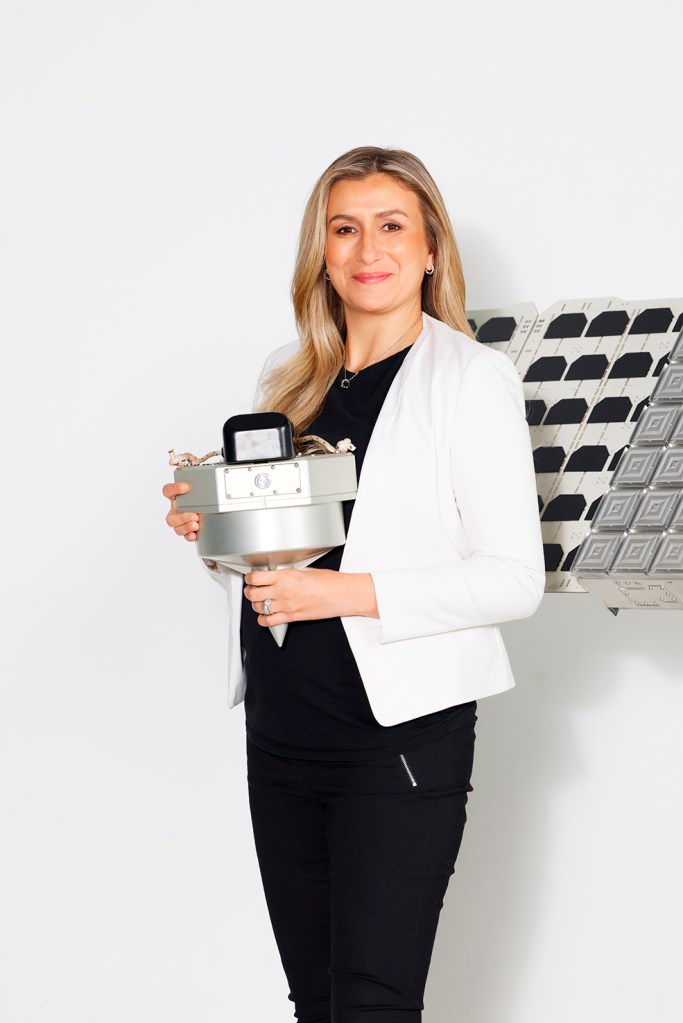
It was Nardini’s first foray into building nanosatellites, and it ignited her passion for the Internet of Things (IoT), particularly as it related to space. “It takes a billion dollars to build an old-school satellite – you know, the ones that are as big as a bus and take forever to build. But the concept of launching smaller satellites, almost like a swarm of bees, that you can refresh with the latest technology – it fascinated me,” she says.
Nardini and Pearson travelled the world with Launchbox, advocating for STEM in schools and attending IoT conferences. It’s there the pair realised something: the world is facing a connectivity crisis. Research estimates that, by 2025, there will be 75 billion devices across the globe, all needing an internet connection. Yet, 3G, 4G and 5G networks can currently only connect about 40% of the global population. Nanosatellites, which operate in low Earth orbit and collect data, could be the fix.
“We founded Fleet Space in 2018 to solve the massive IoT issue and how industries can connect their devices on scale without 3G,” she says.
“At the beginning, it was really Matt and I and a dream. We are climatic founders – even what he does with Airspeeder – it’s about changing how transport is done. So, we raised a lot of money for small satellites to complete Earth observation, and the goal was to move data. Connectivity for me is very important, particularly when you talk about space technology and seeing the Earth from the top.”
In the year of its inception, Fleet Space launched Australia’s first four commercial satellites over three weeks. By 2021, Fleet Space had launched six satellites as part of its Centauri program. But gathering the data is just one side of Fleet Space’s coin – the other is putting it to good use. And so, in 2022, Nardini and Pearson decided to find ways to use data to help companies reach their net-zero goals, so they turned their attention to critical minerals (like lithium, nickel and copper) and how to source them. Now, its core revenue driver is an end-to-end solution for critical mineral discovery called the ExoSphere, enabled by Fleet Space’s satellites and AI to create 3D models of what’s under the Earth’s surface.
“If you listen to Earth, which I find so beautiful, you can gather data,” Nardini says. “Even in the middle of nowhere, with the right instruments, you can measure seismic waves, which change their velocity depending on what type of minerals or rocks they’re passing through. The waves go faster in copper and slower in lithium.”
Fleet Space’s solution, ExoSphere, uses smart seismic sensors to gather and transmit 3D ambient noise tomography data to Fleet Space’s satellites for real-time processing into 3D subsurface insights up to depths of 2.5 kilometres – including structures, zones of mineralisation, and depth to basement – for customers around the world ( like ASX-listed Core Lithium).
“It can take 12 to 17 years to discover a new mine – and to be fair, it’s a difficult problem to solve. How do you know that you have a copper or lithium deposit that’s probably as big as your kitchen 300 kilometres below the Earth’s surface? In the past 10 years, humankind has made 5 million drill holes, and just 0.2% found something. It’s one in 200 drill holes.”
ExoSphere has been used to complete more than 400 surveys for more than 40 customers across five continents. So far, Tata Nardini estimates Fleet Space has amassed 45 terabytes of data, which she says is about the same amount used to train Chat GPT-4.
Flavia is one of those special people whose ambition is evident from the first meeting.
Niki Scevak, Blackbird Partner
“We are training an AI engine on the entire geology foundation for Earth, so we know where things are and don’t have to go in blind. It has been incredibly successful.”
But how did Nardini and Pearson land on an Earth-listening device resembling a giant silver spinning top? From a grainy photo of Buzz Aldrin on the Apollo 11 mission, dated 20 July 1969. In it, Aldrin is deploying a passive seismic experiment (PSE) – a seismometer – to listen to moon quakes and gather data on the moon’s core.
“NASA thought they didn’t get any data from those moon quakes. They thought the experiment had failed. But 40 years later, they ran the same dataset with AI and realised there were thousands of moonquakes. We were inspired. Seismic technology has never been more insightful because of the technology we have today.”
Photos are one way the co-founders gain inspiration – another is blue-sky thinking. “Questions Flavia and I ask each other daily, like ‘What is the impact this will have 100 years from now?’ are now driving thought experiments and discussions across the organisation,” Pearson says.
“Fleet Space began with Flavia and I building satellites by hand in the garage. Now, with satellites in orbit, seismic sensors going to the moon, and our end-to-end solution, ExoSphere, transforming mineral exploration to achieve net-zero, her vision is driving innovation on a global scale.”
But 3D-printing and launching satellites – and indeed innovating in deep tech more generally – can be capital intensive, so Fleet Space has had to fundraise – a lot. So far, it’s banked $100 million in funding from investors like Blackbird, Grok Ventures, Alumni Ventures, and Hostplus.
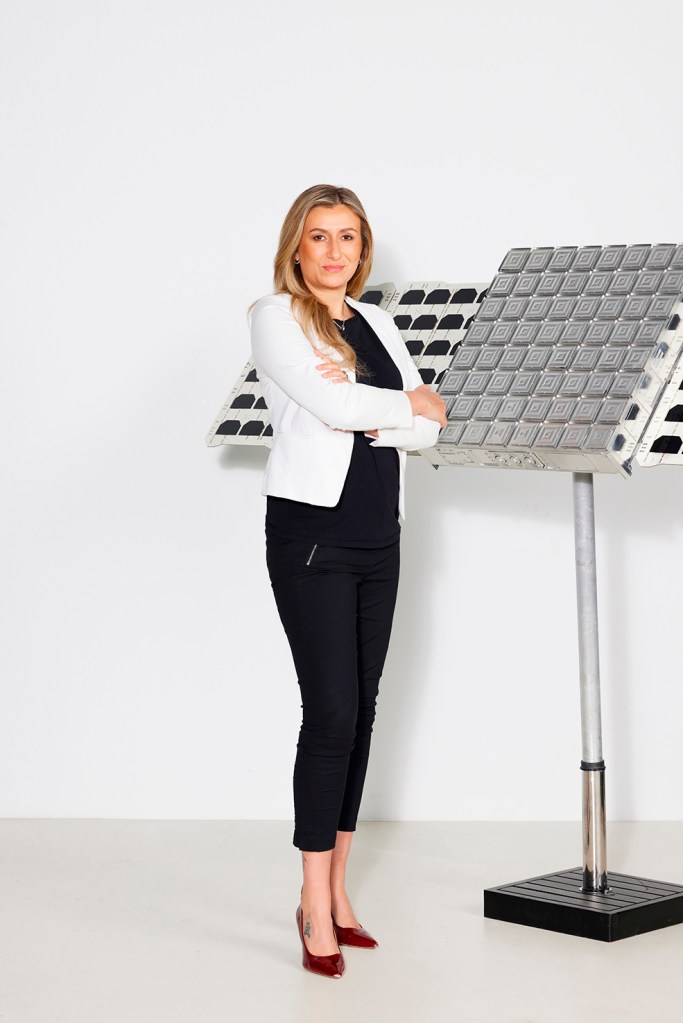
“Flavia is one of those special people whose ambition is evident from the first meeting,” Blackbird Partner Niki Scevak says. “Building Fleet Space was her life’s work, and her magical ability to bring people together and make things happen would be a guiding force in the company’s future.”
But it wasn’t just Nardini’s passion that drove investors – it was her mission to reduce the cost of data by 100 times and opening up more use cases for data in remote areas.
“It’s one of the fastest-growing companies in our portfolio, with a game-changing product loved by customers for its billions of value creation,” Scevak says. “Despite all this traction, the team has remained scrappy and resourceful, helping Fleet Space succeed where other, better-capitalised peers have failed. The opportunity ahead is for Fleet Space to continue its trajectory, continuing to map the subsurface of Earth and find the critical minerals deposits that are needed for the clean energy transition.”
Since its 2018 inception, Fleet Space has employed more than 120 staff members worldwide and expanded its office footprint to the US, Canada, Chile and Luxembourg. It’s also launched eight satellites into low Earth orbit, with its most recent being the Centauri-6 satellite on SpaceX’s Bandwago-1 mission. (Its Centauri-4 satellite recently became the world’s smallest voice-enabled satellite).
The newest addition to the company’s satellite constellation is set to play a vital role in servicing global demand for Fleet’s ExoSphere. Aside from its first satellite launch with New Zealand-based Rocket Lab, FleetSpace shoots all its satellites into the sky on Elon Musk’s SpaceX rockets.
We know that NASA and Elon Musk are going [to Mars], and we want to make sure we’re not doing the same thing to Mars that we have done with Earth.
Flavia Tata Nardini, Fleet Space Technologies co-founder
“What Elon has done with reusing his rockets has allowed us to launch our satellites cheaper. I find it fascinating that this man built a rocket for more satellites to go to space, and I’m launching satellites into space with it to find the critical minerals he uses to build his Teslas. The space industry can actually create realistic change.”
Nardini says Fleet Space is well on its way to unicorn status (becoming a privately owned company valued at $1 billion). “There’s no doubt that’s something I wanted for this company, but our big dream is to discover the universe as well.”
That dream will soon become reality, with Fleet Space to follow in Aldrin’s footsteps and head there in 2026.
The company was awarded a $4 million contract with the Australian Space Agency for its Moon to Mars: Demonstrator program, and its geophysical device, SPIDER (Seismic Payload for Interplanetary Discovery, Exploration and Research), will land on the Moon on Firefly Aerospace’s Blue Ghost lander. That device will record the natural seismic waves of the moon’s subsurface continuously for 14 days and will mark the first piece of Australian seismic technology to land on the lunar regolith.
“Humanity is on the brink of making tremendous strides in our scientific understanding of the lunar regolith by using advanced seismic technologies to acquire deeper insights about the moon’s subsurface. Technologies, like SPIDER, will become key enablers of our long-term efforts to sustain life on the moon and beyond,” Pearson said.
Nardini’s dream is for Fleet Space to be the first to find water and deposits on Mars.
“We know that NASA and Elon Musk are going there, and we want to make sure we’re not doing the same thing to Mars that we have done with Earth. We want to survey it and analyse it before we exploit it. My contribution to society is going to be taking care of this planet, in a sustainable way, and others.”
Look back on the week that was with hand-picked articles from Australia and around the world. Sign up to the Forbes Australia newsletter here or become a member here.
More from Forbes Australia


